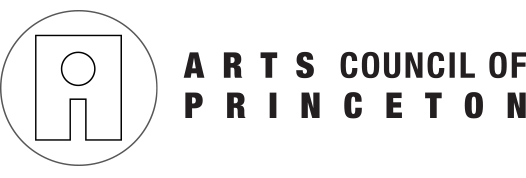Home > Artists > Artists in Residence > Ghada Amer
ghada amer
Multidisciplinary artist
Longterm resident



We proudly announce artist Ghada Amer as a long-term Artist-in-Residence, working in the studio spaces at the Arts Council to produce a new body of clay and print works.
Ghada Amer’s (b. 1963; Cairo, Egypt) wide-ranging practice spans painting, cast sculpture, ceramics, works on paper, and garden and mixed-media installations. Further, she often collaborates with her long-time friend Reza Farkhondeh. Recognizing both that women are taught to model behaviors and traits shaped by others, and that art history and the history of painting in particular are shaped largely by expressions of masculinity, Amer’s work actively subverts these frameworks through both aesthetics and content. Her practice explores the complicated nature of identity as it is developed through cultural and religious norms as well as personal longings and understandings of the self.
Amer was born in Cairo and moved to Nice, France when she was eleven years old. She remained in France to further her education and completed both of her undergraduate requirements and MFA at Villa Arson École Nationale Supérieure in Nice (1989), during which she also studied abroad at the School of the Museum of Fine Arts in Boston, Massachusetts in 1987. In 1991 she moved to Paris to complete a post-diploma at the Institut des Hautes Études en Arts Plastiques. Following early recognition in France, she was invited to the United States in 1996 for a residency at the University of North Carolina, Chapel Hill. She has since then been based in New York.
Amer’s work is in public collections around the world including The Arab Museum of Modern Art, Doha, Qatar; the Art Institute of Chicago, IL; the Barjeel Art Foundation, Sharjah, UAE; the Brooklyn Museum of Art, NY; Centre Georges Pompidou, Paris, France; Chrysler Museum of Art, Norfolk, VA; Crystal Bridges Museum of American Art, Bentonville, AR; the Guggenheim Museum, Abu Dhabi, UAE; the Israel Museum, Jerusalem; and the Samsung Museum, Seoul, South Korea; among others. Among invitations to prestigious group shows and biennials—such as the Whitney Biennial in 2000 and the Venice Biennales of 1999 (where she won the UNESCO Prize), 2005 and 2007—she was given a midcareer retrospective at the Brooklyn Museum of Art in New York in 2008. In the past year, the artist’s first retrospective in France was presented across three institutions in Marseille.
Over the next two years in Princeton, Amer will produce large ceramic wall hangings, and the difficulty in working with thin large-scale forms in clay cannot be overstated. To attain greater structural strength, Ghada uses a craggy sculpture clay body mixed with paper pulp. Liquefied colored clay is painted on the surface to contrast with the earthy tan clay, creating fluid and painterly swatches of color. The bold contour lines demarcating her figures are fashioned with inlaid colored porcelain, some smoothed and smeared into the incised lines, while others are rhythmically pressed into place leaving behind a pattern of her fingerprints. The destructive forces of fire and heat inherent in ceramic processes, juxtapose expressionist gestures of color with resplendent porcelain inlay. The result evokes both nature and culture to form a rugged yet graceful beauty, creating an elegant tension. Ghada folds, tears, bends, and warps the forms to add a further layer of psychological tension in the work.
Ghada’s large wall hangings are undulating curvilinear forms with raised rounded edges framing the image. These “ceramic paintings” contain portraits of women made bright with color and fierce through their rugged organic forms. They reference her paintings torn from their stretchers, folded and crumpled. All of Ghada’s works evoke the process that brought them into being. Though these works fit within a continuation of the ceramic figurative tradition, she defies convention, converting her clay canvases into three-dimensional form.
In this process, Amer will continue her 3+ year working relationship with ACP Executive Director Adam Welch. “I am looking forward to my residency at the Arts Council of Princeton with Adam and continuing exploring challenging techniques”, shares Amer. “He is the only one who can help with this very difficult series.”
Welch echoes her excitement. “Many artists currently converging on the medium generally do so in a manner distinct from their other art practice”, he shares. “Ghada set out to close the distance across her mediums in her quest to express a vision and develop a language that is uniquely her own, uniquely female. Ghada Amer’s ceramics promotes and arguably realizes her mission to attain female empowerment in art. In her work, ceramics captures the sublimity of pleasure and individual fulfillment. Working in clay has given Ghada a great sense of happiness and freedom and has begun to inform her other work. Ceramics can be an inglorious reminder of physical reality where time, heat, and weight maintain an unmistakable presence. While it is difficult to compare bodies of work, there is one aspect of Ghada’s ceramics that sets it above the others.”
During her time in Princeton, Amer will also collaborate with Farkhondeh to work with ACP Master Printer Dave DiMarchi to create a limited print edition.
This project would not be possible without the support of Timothy M. Andrews, longtime supporter of the Arts Council of Princeton, who has generously underwritten the Anne Reeves Artist-in-Residence program.
This project would not be possible without the support of Timothy M. Andrews, longtime supporter of the Arts Council of Princeton, who has generously underwritten the Anne Reeves Artist-in-Residence program.
